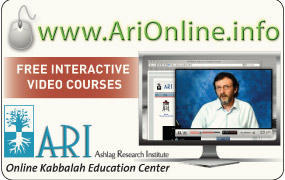
A review of the first Online Education Center lecture, written by Ed Stedman.
The new semester of the Online Education Center started on September 4th with a Fundamentals lesson by Tony Kosinec with more than 800 new students. This was followed by an intermediate lesson also taught by Tony with more than 100 students.
Students come from all around the world including many unlikely places such as China, Saudi Arabia, and Monaco. Of course the 8:00 PM EST time is impossible for some locations on the other side of the world, and so many students will watch the recorded lessons instead of watching the live lessons.
As always, the first Fundamentals lesson started with an explanation of what Kabbalah is and also what it is not. There were the usual questions asking whether Kabbalah could coexist with various religions and mystical practices and also about the nature of reality:
• Can Catholics study Kabbalah?
• Does practicing Judaism help in coming to spirituality?
• Can commandments be skipped altogether?
• Is this world a reality or a dream?
The difference between the new fundamental students and the intermediate students who have already completed the fundamental course is a testament to just how effective the fundamentals classes have been. Tony’s first intermediate lesson featured the “Peace in the World” article from Baal HaSulam and questions centered on the intricacies of the attributes of truth and mercy (discussed in the article).
Many of the intermediate students will be going to the Education Center Retreat that has been scheduled for October 26th through 28th in St. Louis, and there was some discussion and anticipation of this event.
Further Study
The first fundamental and intermediate technical lessons from Mike Kellogg and Igal Zahavi respectively are scheduled for Sunday September 9th while the first of the Advanced Tutorials conducted by Mark Berelekhis is due to happen on Monday September 10th.
Want to enrol to the new Online Education Center course? Click here for free registration and more information
Click Here to Sign Up for a Free Kabbalah Introductory Course – Starts Soon!



